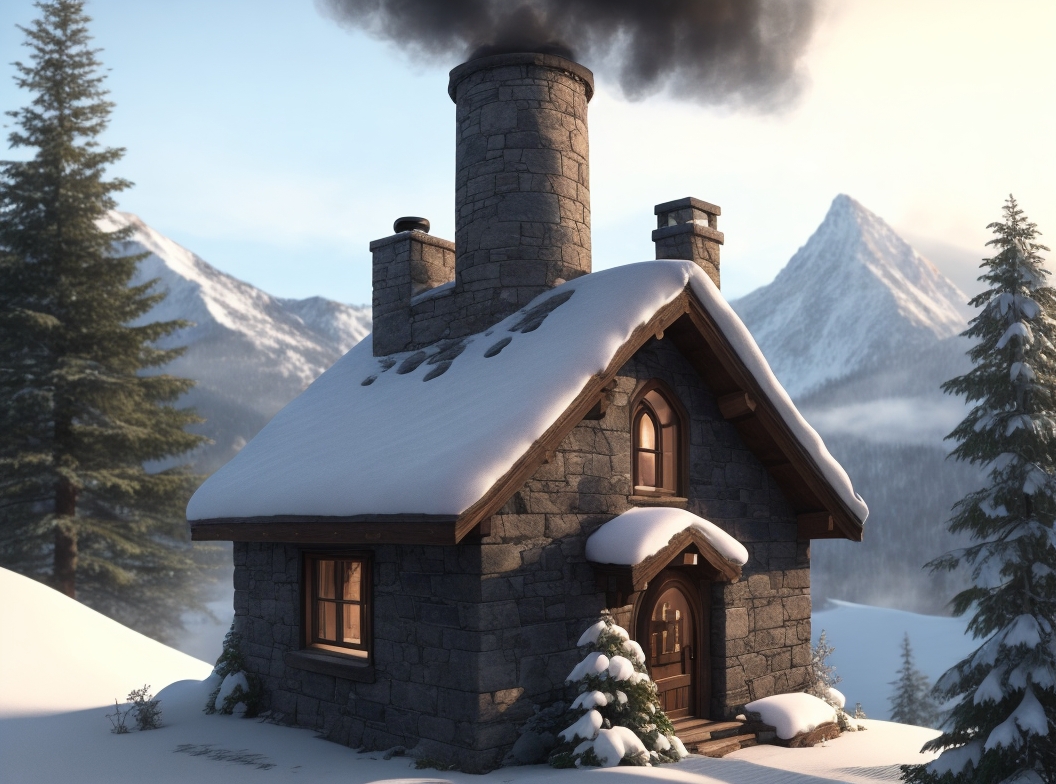If your home has a fireplace, you are likely to know the value of a chimney cap or cover. It plays a vital part in keeping your house safe and clean in addition to shielding your chimney from rain, snow, and debris. In this post, we’ll look at some ingenious chimney cap hacks that can improve your home’s cleanliness and safety while also ensuring that your chimney operates effectively. So, let’s dive in and discover some ingenious tips to maintain a safe and clean home with a well-maintained chimney cap!
Table of Contents
- Introduction
- Understanding the Importance of Chimney Caps
- Selecting the Right Chimney Cap
- Installing a Chimney Cap: A Step-by-Step Guide
- Cleaning and Maintenance
- Chimney Cap Safety Tips
- Common Chimney Cap Issues and How to Fix Them
- The Benefits of Regular Chimney Inspections
- How a Well-Maintained Chimney Cap Saves Energy
- Chimney Cap vs. Chimney Screen: Which One to Choose?
- DIY Chimney Cap Solutions
- Seasonal Maintenance Tips
- Protecting Your Chimney Cap from Wildlife
- Removing Creosote Buildup
- Conclusion
Introduction
For your home to be safe and clean, a working chimney cover is necessary. It shields your chimney from rainfall, trash, and animals while improving the performance of your fireplace and minimizing the risk of fires. In this article, we’ll explore some practical chimney cap hacks that will help you maintain a safer and cleaner home environment.
Understanding the Importance of Chimney Caps
Before we delve into the hacks, let’s understand why chimney cover are vital. A chimney cap acts as a barrier, keeping out rain, snow, leaves, and even small animals. Without a chimney cap, water can seep into your chimney, leading to costly damage over time. Additionally, birds and animals may build nests inside the chimney, posing fire hazards and blocking proper ventilation.
Selecting the Right Chimney Cap
Choosing the right chimney cover or cap is crucial for maximum effectiveness. Look for durable materials like stainless steel or copper, as they offer longevity and resistance to harsh weather conditions. Consider the size and design of the cap to ensure it fits your chimney perfectly.
Installing a Chimney Cap: A Step-by-Step Guide
Installing a chimney cover or cap is a DIY-friendly task. However, it’s advisable to engage an expert if you’re afraid of heights or unclear about the procedure. You can use the step-by-step instructions in this section to install a chimney top securely.
- Measure your chimney flue size
- Purchase a suitable chimney cover or cap
- Assemble the necessary tools
- Safely climb up to your roof
- Attach the cap securely to the flue
- Perform a final inspection
Cleaning and Maintenance
Regular cleaning and maintenance are essential for the longevity of your chimney cover or cap. Over time, creosote, debris, and soot can accumulate, affecting the cap’s performance. Follow these steps to keep your chimney cap in top condition:
- Inspect the cap regularly for debris
- Remove any blockages or obstructions
- Clean the cap and screen
- Check for signs of wear or damage
- Schedule a professional cleaning and inspection annually
Chimney Cap Safety Tips
While chimney cover or caps are designed to enhance safety, it’s essential to follow some additional safety measures to prevent accidents and ensure your family’s well-being:
- Keep the area around the fireplace clear
- Install carbon monoxide detectors
- Never leave a fire unattended
- Avoid using flammable materials to start fires
- Schedule regular chimney inspections
Common Chimney Cap Issues and How to Fix Them
Despite regular maintenance, chimney cover or cap issues may arise over time. Here are some common problems and the solutions to address them:
- Rust and corrosion – Rust-resistant coating should be used.
- Damaged screen – Replace the damaged sections
- Loose cap – Tighten the screws or bolts
- Animal intrusion – Install mesh wire to prevent access
The Benefits of Regular Chimney Inspections
Regular chimney inspections are essential to identify potential issues before they become major problems. A certified chimney sweep can detect and address problems, ensuring your chimney cap functions optimally.
How a Well-Maintained Chimney Cap Saves Energy
A well-maintained chimney cover or cap contributes to energy efficiency in your home. By preventing cold drafts from entering your living space and keeping warm air inside, your HVAC system won’t have to work as hard, resulting in energy savings.
A well-maintained chimney cover or cap contributes to energy efficiency in your home. By preventing cold drafts from entering your living space and keeping warm air inside, your HVAC system won’t have to work as hard, resulting in energy savings.
Chimney Cap vs. Chimney Screen: Which One to Choose?
While both chimney cover or caps and chimney screens serve a purpose, they have distinct functions. Learn the differences and determine which one suits your needs best.
DIY Chimney Cap Solutions
Explore some creative and budget-friendly DIY chimney cover or cap solutions that you can implement with basic tools and materials.
Seasonal Maintenance Tips
Different seasons bring different challenges for your chimney cap. Learn how to prepare your cap for each season to maintain its efficiency year-round.
Protecting Your Chimney Cap from Wildlife
Animals can be persistent in seeking shelter in your chimney. Discover humane ways to protect your chimney cap from unwelcome critters.
Removing Creosote Buildup
Creosote buildup is a fire hazard and can affect your chimney cap’s performance. Learn safe methods to remove creosote and prevent future buildup.
Conclusion
A well-maintained chimney cover or cap is an essential investment for a safer and cleaner home. By following the clever chimney cover or cap hacks outlined in this article, you can protect your chimney, improve energy efficiency, and ensure the safety of your family. Regular inspections, maintenance, and choosing the right cap will go a long way in keeping your home cozy and secure for years to come.

FAQs
How often should I clean my chimney cap?
Regular cleaning is recommended, ideally once every six months or at least annually. However, if you notice excessive debris, it’s best to clean it more frequently.
Can I install a chimney cap myself, or should I hire a professional?
If you’re comfortable with heights and have some DIY experience, you can install a chimney cap yourself. However, if you’re unsure or have a complex roof structure, it’s safer to hire a professional.
Do chimney caps affect fireplace draft?
No, it is designed to enhance draft efficiency by preventing downdrafts and improving airflow.
What are some signs that my chimney cap needs replacement?
Signs of rust, visible damage, loose fittings, or an increase in debris entering your chimney are indicators that it may need replacement.







2 thoughts on “Chimney Cap Hacks: Clever Tips for a Safer and Cleaner Home”